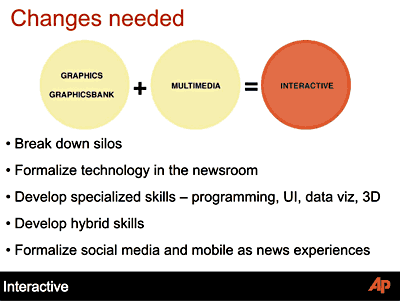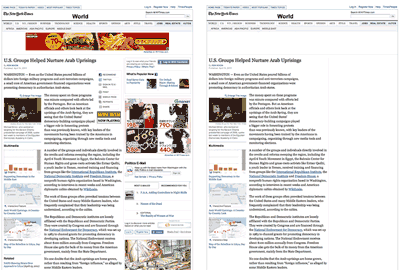Teaching journalists how to fish?
News orgs are now competing with web and mobile apps developers like Flipboard or Instapaper – and loosing on user experience.
You know the saying: teach people how to fish… instead of giving them a fish. Because of the web, because of the iPad, and because of Twitter, Facebook and YouTube, newsrooms have a cruel choice to make.
They can hope that someone else will built tools and formats for the digital age, and that the tools and formats will be simple enough for anyone (including a classically trained journalist) to use and apply in their newsroom. Or they can learn to fish, and try to turn the newsroom into a full speed tech company.
Eating vendors’s fishes
It’s a cruel dilemma, because we can’t be sure any of them is a winning choice. Many of the internally built tools are nothing more than cool experiments – not game changers.
Of course you can work with great agencies like Information Architects, Inc., but if you want to use them to grow your internal capacity to innovate, you are back to square one.
It may not be a choice at all, but much more a question of the internal culture of a given news organization. Eating the fishes you buy is a comfortable way to think of technology: we’ll just have to adopt new things at some point. For many organizations, this is the only way to deal with technology, because they don’t have any digital skills and culture internally.
(They use to have print mastery and have broadcast skills and culture internally, so why not digital mastery?)
We have seen that a relatively young news channel like Aljazeera is much more adept to experiment with the web than older channels. That’s because Aljazeera is still building its identity, going private this year.

Making sense of the flow
For example, it is becoming a truism that good stories are weaved with external materials more and more.
But it’s difficult to makes sense of this external material, because it comes in small pieces, loosely join – «micro-chunks» as Mohamed Nanabhay called them during its lecture.
As any news organization would have, Aljazeera at first wondered during the Egyptian revolution about the news value of those micro chunks, for example «3 minutes videos of people running in the street» without context to makes sense of them. The online newsroom quickly acknowledged them as an element of the news flow that people watch in between deeper reporting, and integrated them in their live blogs.
It can go much farther: a news team with at least some technical awareness and an active community can find «facts hidden in plain sight» in the daily flow of data says Evan Hansen.
Wired pushed its readers to use WikiScanner and report wiki-washing cases – covert self-serving edits by brands or politicians on Wikipedia.
Designing the news
News organizations are now not merely competing with blogs and other web news pure players, but they are now competing with web apps and mobile apps developers like Flipboard or Instapaper. These apps beats news websites in term of user experience design – or more simply said, in term of readability, exemplified by Oliver Reichenstein in his premium reading designs.

The more technically advanced news organizations seems to be on the way to transform themselves in tool building company.
We have seen this before with book publishers: O’reilly, because of its root as a technical books publisher, not only explored ebooks way before the others, but built several unique platforms, tools and workflows for publishing in the digital era - and open sourced several of them along the path.
The tipping point for news organizations – and other originally non-digital organizations – might be best summarized by Shazna Nessa when she says: «it was not long ago that I was presented as the IT person – it doesn’t happen anymore».
